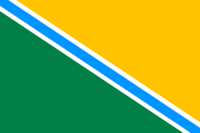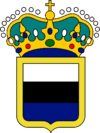Archduchy of Loringia
Archduchy of Loringia Arcivévodství lorynské (Czech) | |||||||
|---|---|---|---|---|---|---|---|
| Motto: Veritas omnia vincit | |||||||
| Anthem: TBC | |||||||
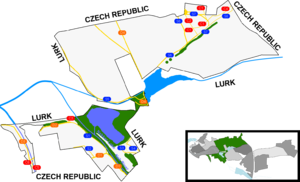 | |||||||
| Capital | Artifax | ||||||
| Largest city | Artifax | ||||||
| Official languages | Czech | ||||||
| Demonym(s) | Loringian | ||||||
| Government | Archduchy | ||||||
• Archduke | Karl Wilhelm Franz Friedrich I. von Ravensburg | ||||||
| Legislature | National Diet | ||||||
| Establishment | 2014 | ||||||
| Currency | Shares monetary policy with Mercia | ||||||
| Time zone | CET | ||||||
Website TBC | |||||||
| |||||||
The Archduchy of Loringia (Czech: Arcivévodství lorynské) is a landlocked nation located in Central Europe, bordering only the Czech Republic and the Noble Republic of Lurk. Loringia used to be one of the Lurk's krajs until it was separated and joined Mercia, with the Lurkish president Alex White becoming Archduke of Loringia, under the regnal title of Lord Karl Friedrich von Ravensburg. Furthermore, Loringia is also in a state of condominium with the Noble Republic of Lurk, where both nations share traffic laws and roadway governance.
Etymology
Lorynsko, or Loringia was named after the German state of Thüringen, which is known for its nature. Formerly, the Czech name of the archduchy was "Porynsko", which translates into land by the Ryn [river].
History
The Archduchy of Loringia was formerly a Kraj (territorial subdivision) of the Noble Republic of Lurk, which was formed according to the Action Plan of a previous incarnation of that state, the Archduchy of Lurk. A constitutional reform occurred in 2013 when an edited version of the Czechoslovak constitution from 1920 was adapted (with added direct democracy), which created a representative democracy in Lurk. On the 9th February 2014, the Kraj of Loringia seceded from the Noble Republic of Lurk and, declaring itself an Archduchy under Archduke Karl Friedrich von Ravensburg, became an Autonomous Region of Mercia. A full history of the Noble Republic of Lurk before the secession of Loringia can be found here.
Geography
Loringia can be divided into two distinct regions, South Loringia and North Loringia. North Loringia can be described as a flatland characterised by its many vast fields of crops. South Loringia is a grassland with a small forest area, located near the important Nek River.
South Loringia
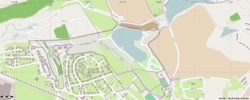
South Loringia hosts two rivers, Ryn and Nek. Nekker Lake, the largest lake of Lurk, can also be found here. A small forest is located near the lake. The area near the lake is protected by the Noble Republic of Lurk as the Nek River National Park and by the Czech Republic as a Nature Reserve. Lurk extends this protection to the entire Nek River area.
North Loringia
North Loringia is a region of fields and grasslands. It borders Lurk Hills to the West and Czech Republic to the East. Unlike the South, North Loringia has infrastructure of higher quality, with numerous asphalt paved roads and tracks for cyclists.
Government
Nobility
Archduke
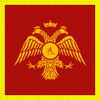
Archduke is the monarch of Loringia. In the nobility hierarchy, this position is considered the highest. Currently, the Archduke does not have any limits or restrictions on his power. Since the foundation of Loringia, Karl Wilhelm Franz Friedrich von Ravensburg holds the position of the Archduke.
Other nobles
Currently, the landed Noble hierarchy is as follows: Archduke, Grand Duke, Duke, Count and Margrave. Each noble rank has specific power in the land they are given. Within Loringia, a noble can be a vassal of any other noble.
National Diet

The National Diet is a proposed organ consisting of the representatives of the Four Estates. The First Estate is composed of the representatives of nobility (excluding the Archduke), the Second Estate represents the clergy, the Third Estate contains city representatives and the Fourth Estate represents the rest of the population. The First and Second Estates are appointed directly by the Archduke, the rest are elected.
First Estate
The First Estate consists of both landed and unlanded nobles of Loringia.
Second Estate
The Second Estate consists of representatives of the clergy. The Second Estate is not elected, the members are chosen by the Archduke. At least one of the representatives must be chosen from the Mercian Christian Church.
Third Estate
The Third Estate represents cities and the bourgeoisie in the National Diet. Currently, as there are no cities in Loringia, this Estate is empty.
Fourth Estate
The Fourth Estate represents the rest of the population. They are elected through the entirety of Loringia.
Subdivisions
Loringia is divided into Cities, Duchies, Margraviates and Unincorporated territories.
Duchies
Duchies are by far the largest of the current subdivisions. There are currently two duchies, the Grand Duchy of Upper Loringia and the Duchy of Lower Loringia. Duchies are ruled by a Duke. Dukes are named by the Archduke of Lurk, and their titles are not hereditary. Duchies have a right of representation in the Fourth Estate and the First Estate.
Cities
Cities are subdivisions similar to the Duchies, however, they are completely democratic in nature. Cities have the right to form their own assemblies and elect own leaders, unlike in Duchies or Margraviates. Cities must have a founding charter. Currently, the only city is the City of Artifax Corporation. The right of representation to the Third Estate is guaranteed.
Margraviates
Margraivates are usually thin territories scattered along the border with the Czech Republic. They are supposed to be border buffer zones and as such no other territorial subdivision borders the Czech Republic. They are ruled either by a specific Margrave appointed by the Archduke or the Archduke himself. No citizens are expected to live there, the right of representation to the Fourth Estate is possible only by a proclamation of the Archduke and the Margrave.
Unincorporated territories
The unincorporated territory is a designation applied to territories which are claimed by Loringia used to denote their temporary status within Loringia. Either they will get unclaimed by the Archduke, or they will be turned into one of the other subdivisions. They have no right of representation and they are directly controlled by the Archduke.
Transport
Loringia claims a variety of roads, ranging from dirt paths to paved asphalt roads. Loringia's roadway system is extensive, total length is estimated to be over 6 kilometers.[1] Nearly two kilometers of these roads are paved. Loringia's road classification system is the same as the one used in Lurk and the Coronese Confederation. Coincidentally it is also one of the main reasons Loringia is in a condominium with Lurk.
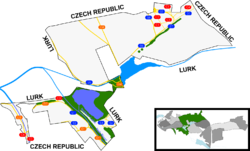
| Symbol | Full name | Example |
|---|---|---|
| D1 | Dálnice (Motorway) | Lordů (D1) |
| S1 | Silnice (road) | Ústavní (S5) |
| C1 | Speciální (special-type road) | Unnamed road (C1) |
| 1X | Konfederální (CSO road number) | Lordů (1H) |
-
A roundabout in Loringia
-
A typical D-class road
-
A dirt road (S-class), Loringian Bridge
-
A bridge over Nek
References
- ↑ Includes only major roads, Loringian Roadway Survey of 2015.
